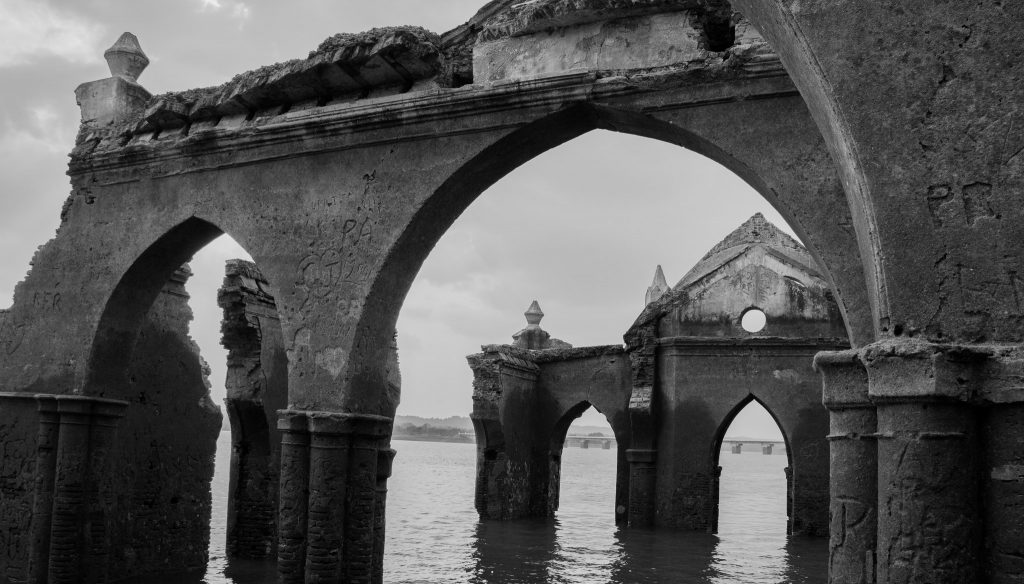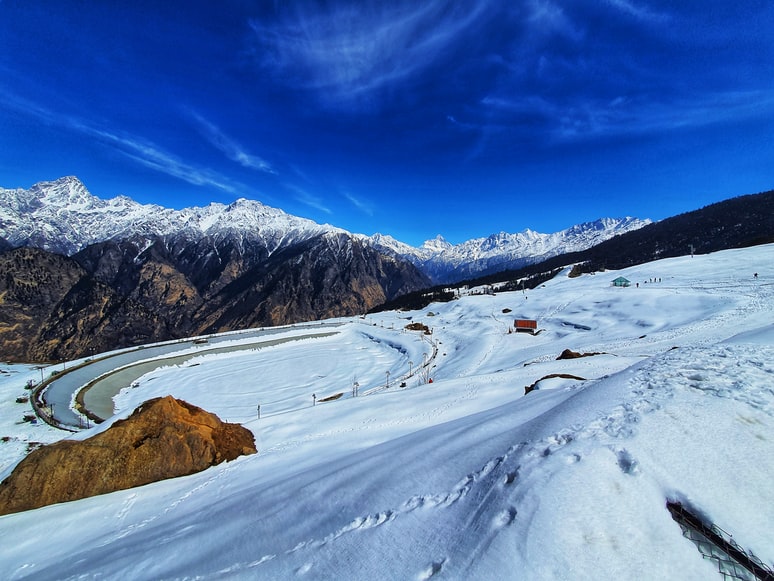Diplomacy usually conjures images of handshakes, serious talks, and perhaps a stiff cup of tea. But when Prime Minister Narendra Modi presents a gift to a global leader, it’s anything but ordinary. Forget the typical luxury items; these gifts are handcrafted gems straight from India’s most tucked-away villages, each a story. These PM Modi gifts, lovingly crafted by artisans whose names are known only in their small communities, are now turning heads in the grandest halls of power across the world.
What makes these PM Modi gifts so special? They’re a slice of India, wrapped in tradition and tied with the threads of culture. And here’s the kicker—these aren’t just gifts; they’re invitations. Yes, invitations! They beckon you to embark on your own adventure, to travel to these hidden corners of India where the real magic happens. It’s as easy as taking a road trip by booking a cab from Delhi to these villages or from any location in India, where these extraordinary art pieces are crafted, allowing anyone to connect directly with the culture while boosting the local economy.
How PM Modi’s gifts align with the ‘Vocal for Local’ initiative
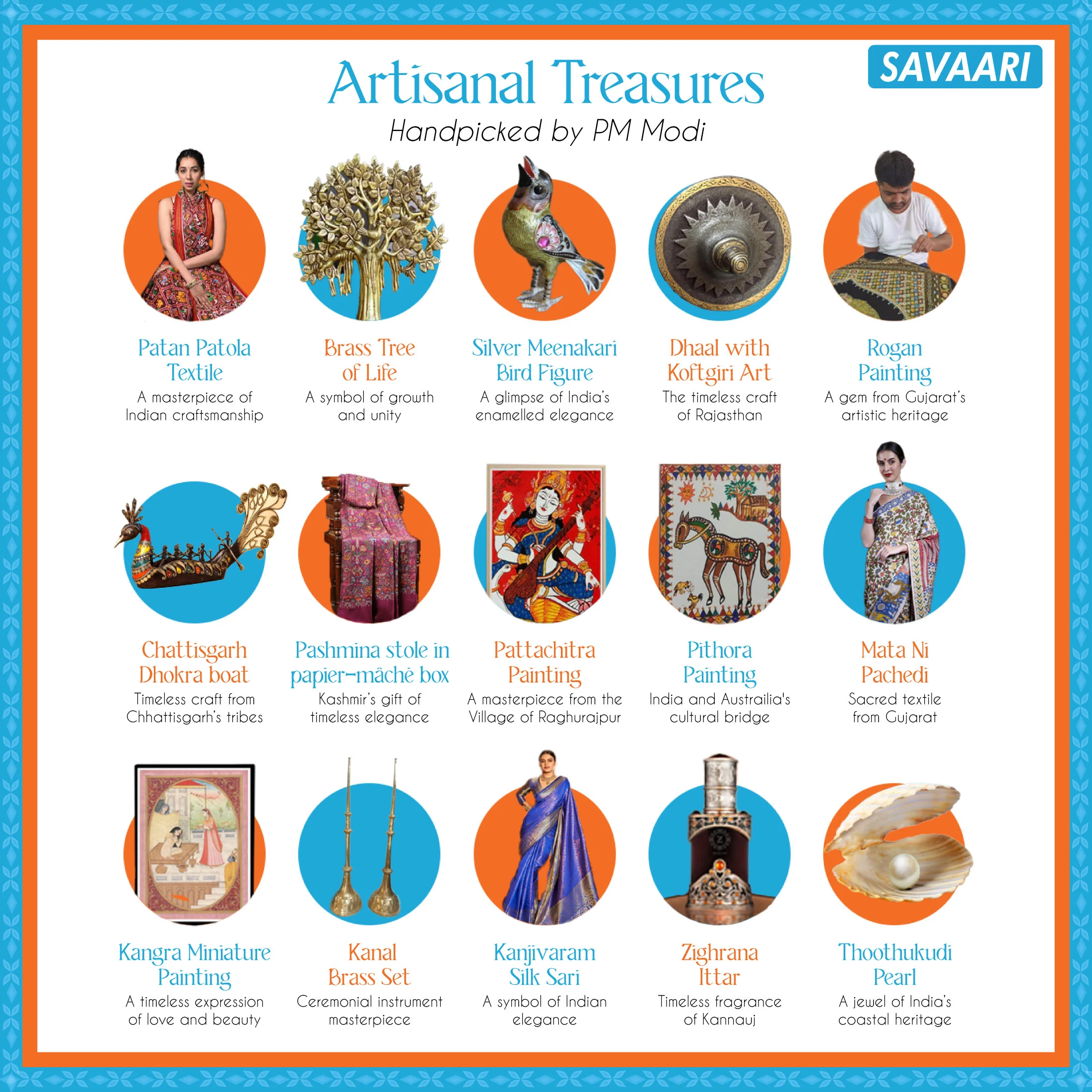
Prime Minister Narendra Modi’s ‘Vocal for Local’ initiative has been gaining significant momentum, with prominent figures from India Inc, Bollywood, and social media influencers rallying behind the campaign. This initiative underscores the importance of supporting local artisans and promoting indigenous products, ensuring that the rich heritage of India’s craftsmanship is celebrated both domestically and on the global stage.
By carefully selecting and presenting these items, PM Modi gifts are more than just thoughtful gestures—they are powerful symbols of India’s commitment to the ‘Vocal for Local’ movement. Each of these PM Modi gifts showcases India’s unique cultural heritage while highlighting the incredible skill and dedication of local artisans who have preserved these crafts for generations.
These PM Modi gifts serve as ambassadors of India’s diverse traditions, reinforcing the message that by supporting local products, we are preserving the legacy of our nation’s artisans and promoting sustainable economic growth. Additionally, crafting diplomacy through artisanal gifts is a unique approach PM Modi shares with the world.
So, what exactly has Modi been gifting the world? Let’s unwrap some of the most fascinating MP Modi gifts shared with foreign dignitaries.
1. Patan Patola Textile – A masterpiece of Indian craftsmanship
When Prime Minister Narendra Modi presented Italian Prime Minister Giorgia Meloni with a Patan Patola Dupatta, he was sharing a piece of India’s rich heritage. The Patan Patola, a Double Ikat textile, is so meticulously crafted that the front and reverse sides are indistinguishable—an emblem of perfection. The word ‘Patola’ comes from the Sanskrit term ‘pattakulla,’ meaning silk fabric, and the craft’s origins trace back over 11 centuries.
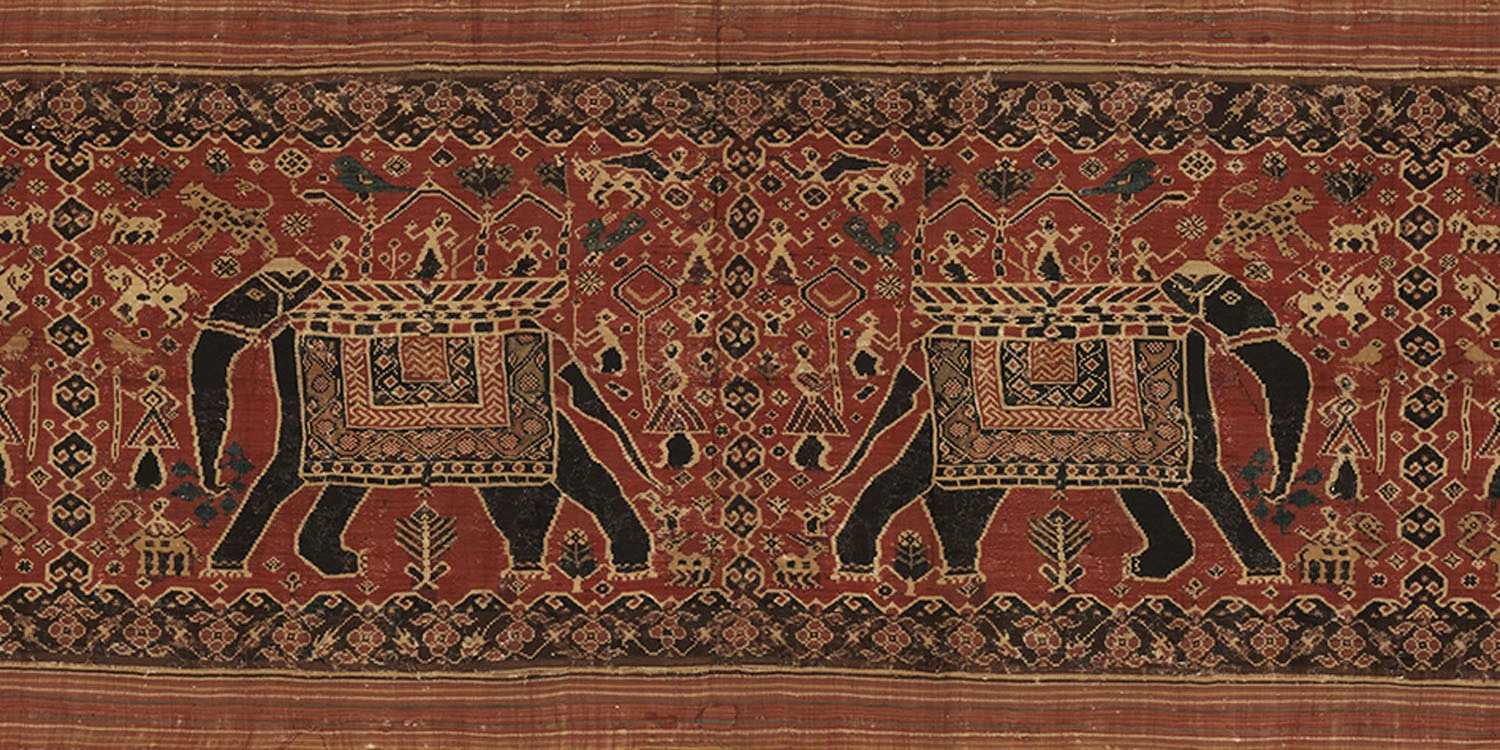
The story of Patan Patola begins with the Salvi community, who migrated from Maharashtra and Karnataka to Patan, Gujarat, under the Solanki Dynasty. This migration was fueled by King Kumarpala’s deep admiration for the fabric—he was so captivated by its beauty that he wore a new Patola every day on his way to the temple. Over the centuries, the Patan Patola has secured its place as a symbol of luxury in Indian cultural heritage, known for its vibrant hues, intricate designs, and unparalleled craftsmanship. Its significance is so profound that the Patola weave is even depicted in the carvings of the Ajanta Caves.
In all of Patan, only two families of the original 700 still make Patola: the Sonis and the Salvis. The Sonis are open about what they do, but the Salvis are tight-lipped about what goes on within their workshops. They also refuse to pass down the knowledge to anyone but their sons.
Where to find Patan Patola textile in India
Operated by the renowned Salvi family, Patan Patola Heritage Museum offers a unique opportunity to witness the intricate art of Patola silk weaving. The Salvi family, who have specialized in double-ikat weaving since the 11th century, provide demonstrations on traditional looms, showcasing their expertise in this ancient craft. The museum displays a variety of textiles, including the family’s masterpiece, an elephant-motif sari, alongside other beautifully crafted single-ikat textiles from around the world.
The Salvis primarily use natural dyes, such as indigo and turmeric, to create their hand-woven silk saris, which start at approximately ₹180,000 (US$2600) and can go up to three times that amount, depending on the complexity of the design. Moreover, due to the intricate process, there’s a three-year waiting list for these exquisite saris, though single-ikat weavings, which are quicker and more affordable, are also available. You can book a Savaari from Ahmedabad to Patan to visit the Patan Patola Heritage Museum. The museum is conveniently located just down the road from the Rani-ki-Vav stepwell, making it an ideal cultural excursion.
2. Brass Tree of Life – A symbol of growth and unity
When Prime Minister Narendra Modi gifted a Brass Tree of Life to Finland’s Prime Minister Sanna Marin, he was offering more than just a beautiful artifact—he was sharing a symbol deeply rooted in Indian philosophy. The Tree of Life, with its intricate branches and roots, represents the development and growth of life, capturing the essence of inclusiveness and unity.
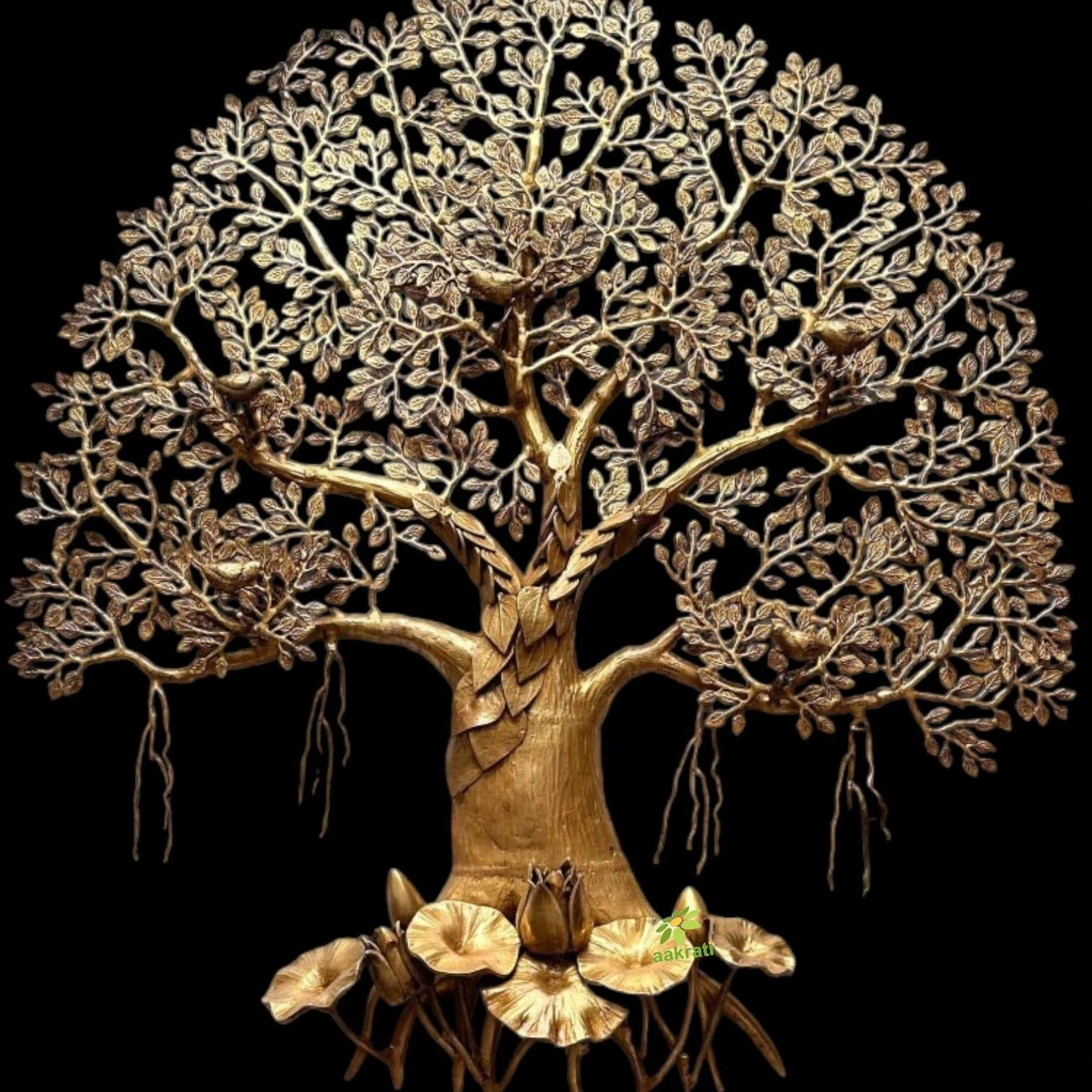
This handcrafted wall art piece from Rajasthan is a stunning example of India’s rich tradition and the exceptional skill of its artisans. Made from brass, the Tree of Life depicts a harmonious connection between all forms of life. The roots symbolize our connection to the earth, grounding us in nature, while the branches stretch upwards, representing growth and aspiration. The leaves and birds nestled within the tree embody the vibrancy of life, and the candle stand at its base signifies light—both literal and metaphorical, illuminating our path forward.
Where to find the Brass Tree of Life in India
To find the Brass Tree of Life, Rajasthan is the best place to explore. Renowned for its skilled metal artisans, cities like Jaipur and Udaipur offer a range of handcrafted brass items, including the Tree of Life. The bustling markets of Johari Bazaar in Jaipur and Bada Bazaar in Udaipur are great spots to discover these intricate brass pieces. Additionally, visiting the artisan workshops in smaller towns like Alwar or in the Shekhawati region can provide a more personalized experience, where you can see the craftsmanship up close and even commission custom pieces. For a more curated selection, you can visit specialty stores like the Rajasthali Emporium in Jaipur, which showcases high-quality, authentic crafts from across Rajasthan.
3. Silver Meenakari Bird Figure – A glimpse of India’s enamelled elegance
During the 2nd India-Nordic Summit in Copenhagen, Prime Minister Narendra Modi presented a silver Meenakari bird figure from Varanasi to Denmark’s Crown Princess Mary, symbolizing India’s ‘Vocal for Local’ initiative. This exquisite piece of art is a testament to the ancient craft of Meenakari, an age-old technique of enamelling metal surfaces with vibrant colors and intricate designs.
Meenakari, believed to have originated in Persia, found its way to India in the 16th century, flourishing under the patronage of Mughal Emperor Akbar. Initially, this art adorned the grand interiors of Mughal palaces—walls, ceilings, and thrones—all bore the stunning enamel work that became synonymous with luxury and refinement. Over time, Meenakari evolved into a decorative art form for jewelry, utensils, and other metal objects, retaining its regal charm.
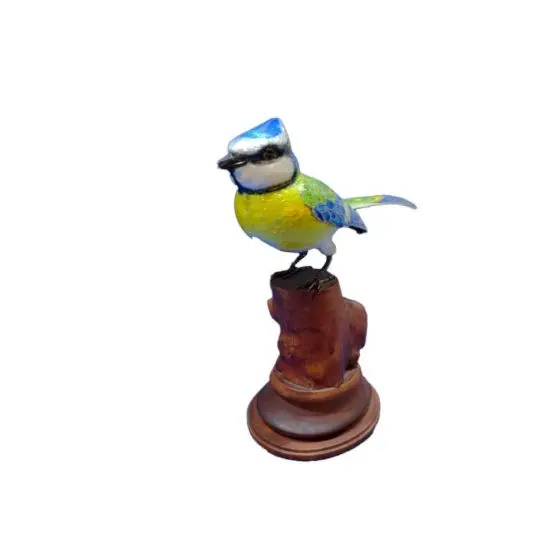
The silver Meenakari craft from Varanasi, especially known for its delicate use of pink hues, has a rich history of nearly 500 years. This particular piece, a bird figure, captures the essence of the craft’s Persian roots while celebrating the local expertise of Varanasi’s artisans. Today, Uttar Pradesh is famous for a diverse array of handicrafts that are highly valued and exported both nationally and internationally. Here are some of the finest handicrafts that can be found in Uttar Pradesh.
Where to find Meenakari craft in India
Varanasi is the heart of Meenakari craft in India, particularly renowned for its delicate silver Meenakari work. Moreover, the vibrant lanes of the city’s metalworking districts, such as Gai Ghat and Chowk, are filled with workshops where artisans meticulously create these exquisite enamelled pieces. Here, you can witness the intricate process of Meenakari firsthand and purchase beautifully crafted items directly from the artisans.
For a curated shopping experience, visit Banaras Art Emporium or other specialized stores in Varanasi that showcase a wide range of Meenakari products, including jewelry, utensils, and decorative items like the iconic bird figures. To make your visit seamless, consider booking a Savaari from Lucknow to Varanasi to explore these artisanal hubs, allowing you to delve into the rich tradition of Meenakari at your own pace. If you’re exploring beyond Varanasi, Jaipur is another prominent center for Meenakari, where the craft is often applied to jewelry and other luxury items. In Jaipur, markets like Johari Bazaar and Tripolia Bazaar are famous for their extensive collections of Meenakari art.
4. Dhaal with Koftgiri Art – The timeless craft of Rajasthan
Prime Minister Narendra Modi, in a gesture that encapsulates India’s rich artisanal heritage, presented a dhaal with Koftgiri art from Rajasthan to the Prime Minister of Norway. This traditional art form, also known as Tarkashi, is a masterful technique of decorating arms and armor, a craft that flourished during the Mughal era and has been practiced for centuries in the Mewar district of Rajasthan.
Koftgiri involves inlaying intricate patterns into metal using silver and gold wires, a process that requires immense skill and precision. The origins of this craft date back approximately 500 to 700 years, and it has been passed down through generations of artisans. Originally used to adorn the weapons of warriors, Koftgiri art has become a symbol of India’s enduring craftsmanship.
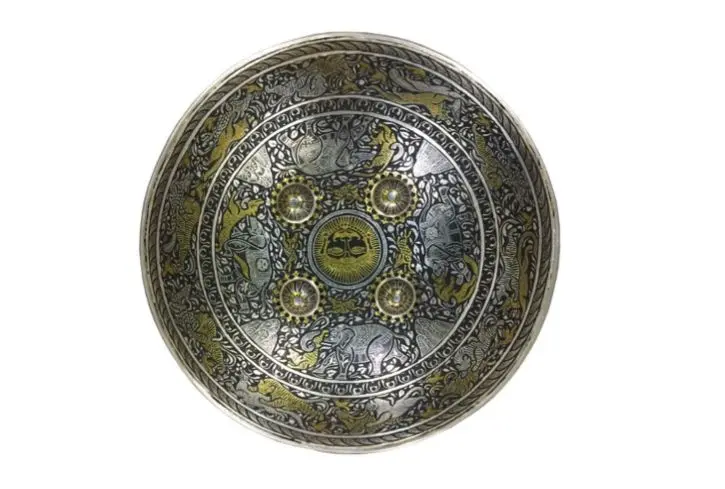
Where to find Koftgiri Art in India
Koftgiri art, with its rich heritage and intricate craftsmanship, is still alive and thriving in the vibrant cities of Jaipur and Udaipur in Rajasthan. Artisans in these regions continue to practice this ancient technique, skillfully inlaying silver and gold into metal to create stunning decorative pieces.
In Jaipur, you can explore markets like Johari Bazaar and Bapu Bazaar, where you may find Koftgiri-decorated items, ranging from traditional arms and armor to more contemporary decorative pieces. Udaipur, with its deep-rooted connection to Mewar’s royal history, is another excellent destination to discover this craft. Local artisans often showcase their work in workshops and small boutiques, where visitors can purchase these exquisite pieces directly.
5. Rogan Painting – A rare gem from Gujarat’s artistic heritage
During his visit to the Amalienborg Palace in Copenhagen, Prime Minister Narendra Modi presented a Rogan painting to Queen Margrethe II of Denmark, offering a glimpse into one of India’s most unique and rare art forms. Rogan painting, with its roots in the small village of Nirona in Gujarat, is a meticulous craft where paint made from boiled oil and vegetable dyes is carefully applied to fabric using either a metal block or a stylus.
This art form, whose name ‘Rogan’ derives from the Persian word for varnish or oil, was traditionally practised by the Khatri community of Kutch. Once sustained by local animal herders and farming families, Rogan art was a prominent feature in bridalwear and other ceremonial textiles. However, with the advent of machine-made textiles, the demand for Rogan art began to wane, leading to a near-extinction of this craft by the late 20th century. Today, Rogan art is kept alive by a handful of artisans, most notably the family of Abdul Gafur in Nirona, who have transformed it from decorative art into a unique and intricate fine art form.
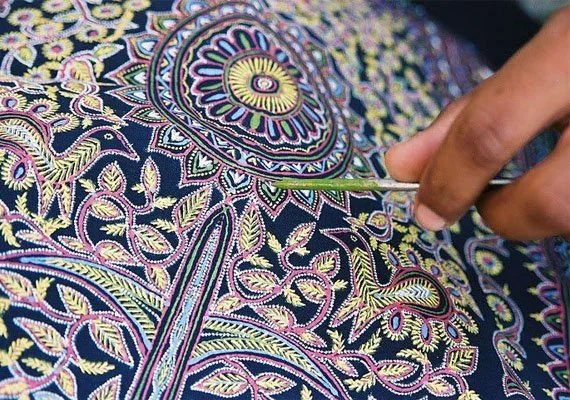
Where to find Rogan Painting in India
You can find Rogan painting in the small village of Nirona in the Kutch district of Gujarat. This village is the heart of Rogan art, where the last remaining families of artisans continue to practice and preserve this ancient craft. Visitors to Nirona can witness the painstaking process of creating Rogan paintings, where artisans use a stylus to apply vivid, oil-based colors to fabric, creating intricate designs and patterns. For those planning to visit, Nirona is accessible by road from Bhuj, the nearest major city. Booking a Savaari from Bhuj to Nirona can provide a comfortable and convenient way to explore this village and its remarkable artistic heritage.
6. Dhokra boat – A timeless craft from Chhattisgarh’s tribal heritage
During his visit to Denmark, Prime Minister Narendra Modi gifted a Dhokra boat from Chhattisgarh to Crown Prince Frederik, highlighting one of India’s most ancient and revered art forms. Dhokra, a non-ferrous metal casting technique, uses the lost-wax casting method, a process that has been part of Indian craftsmanship for over 4,000 years, dating back to the Harappa and Mohenjo-daro civilizations.
This traditional craft, primarily practiced by artisans in Central and Eastern India, is celebrated for its primitive simplicity, enchanting folk motifs, and powerful forms. The Dhokra art of Chhattisgarh, especially from the Bastar district, stands out for its distinct tribal themes that often depict animals, mythical creatures, and natural shapes, capturing the essence of the region’s rich cultural heritage. This PM Modi gifts represents not just an art form, but the deep-rooted heritage and creativity of Chhattisgarh’s tribal communities. It’s a must-have souvenir of India that deserves a spot on your wishlist when exploring India’s artisanal treasures.
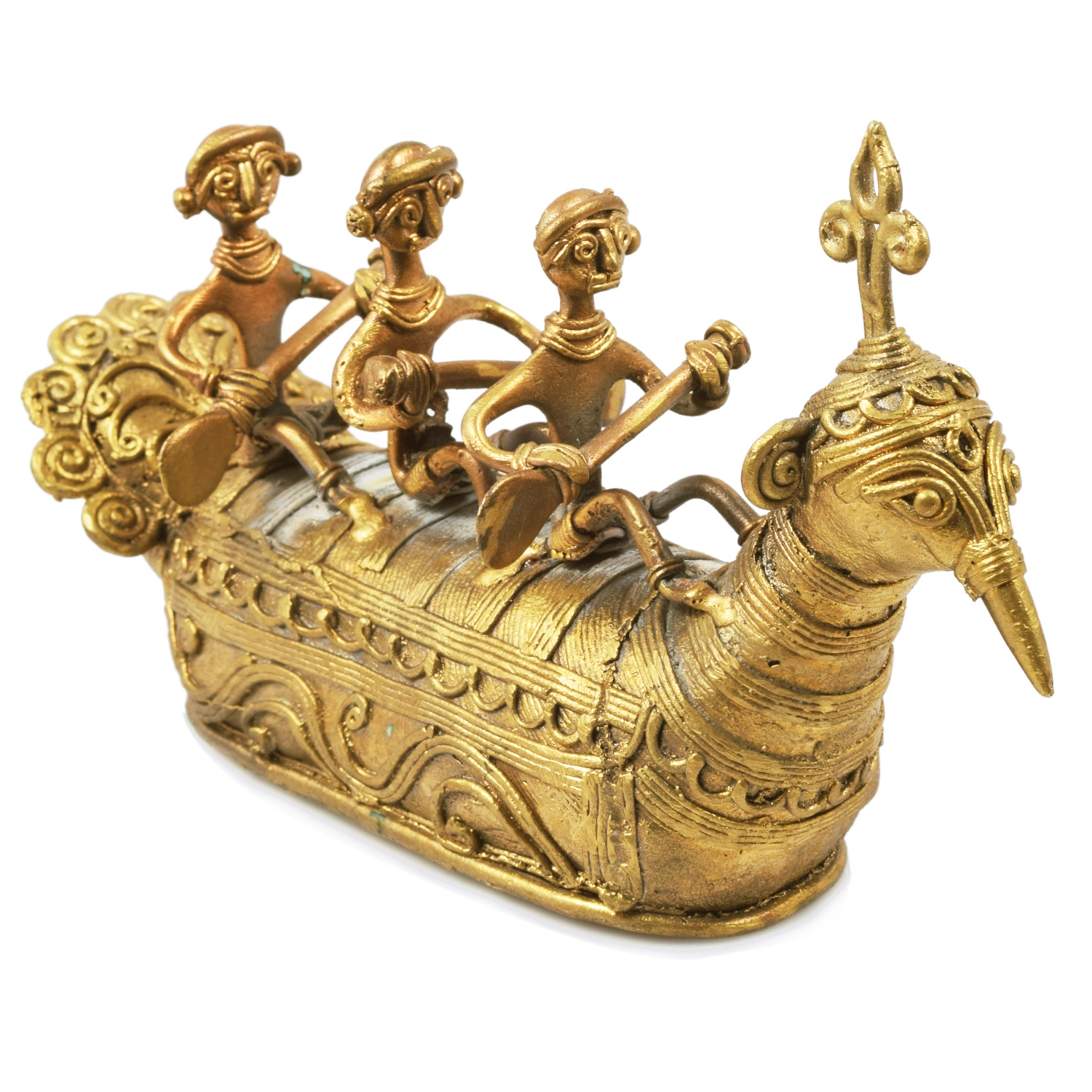
“During my road trip through the heart of Chhattisgarh, I had the pleasure of exploring the Bastar region, a place rich in culture and tradition. My Savaari driver, who was incredibly knowledgeable about the local heritage, introduced me to the fascinating world of Dhokra art. As we drove through the lush landscapes, he shared stories about the ancient craft, explaining how the local artisans use the lost-wax casting technique to create these intricate metal sculptures. When we arrived at a small artisan village, I was blown away by the creativity and skill on display. The Dhokra pieces, with their primitive simplicity and enchanting motifs, were like nothing I had ever seen before. I couldn’t resist taking home a Dhokra sculpture—a beautiful depiction of a mythical creature—that now sits proudly in my living room.”
Arya Sethi
7. Pashmina stole in a papier-mâché box – Kashmir’s gift of timeless elegance
Prime Minister Narendra Modi, in a gesture of elegance and tradition, presented a Pashmina stole encased in a beautifully crafted papier-mâché box from Jammu and Kashmir to his Swedish counterpart. Renowned for their luxurious feel and exquisite craftsmanship, Kashmiri Pashmina stoles have been coveted as symbols of sophistication and warmth for centuries.
Derived from the Persian word “pashm,” meaning wool, the term in Kashmir specifically refers to the fine, unspun wool of the Changthangi goats, domesticated in the harsh terrains of the Himalayas. The secrets of Pashmina weaving were closely guarded by ancient Kashmiri herders and weavers, whose skill transformed this raw material into the finest stoles, renowned for their unparalleled softness and warmth.
The art of Pashmina weaving dates back to the ancient Himalayan region, where creating these shawls was a mark of prestige and privilege, often reserved for nobility. Each stole, woven with painstaking precision, was not just a garment but a symbol of wealth, status, and refined taste. The papier-mâché box, itself a work of art, complements the stole, highlighting the rich cultural heritage of Jammu and Kashmir.
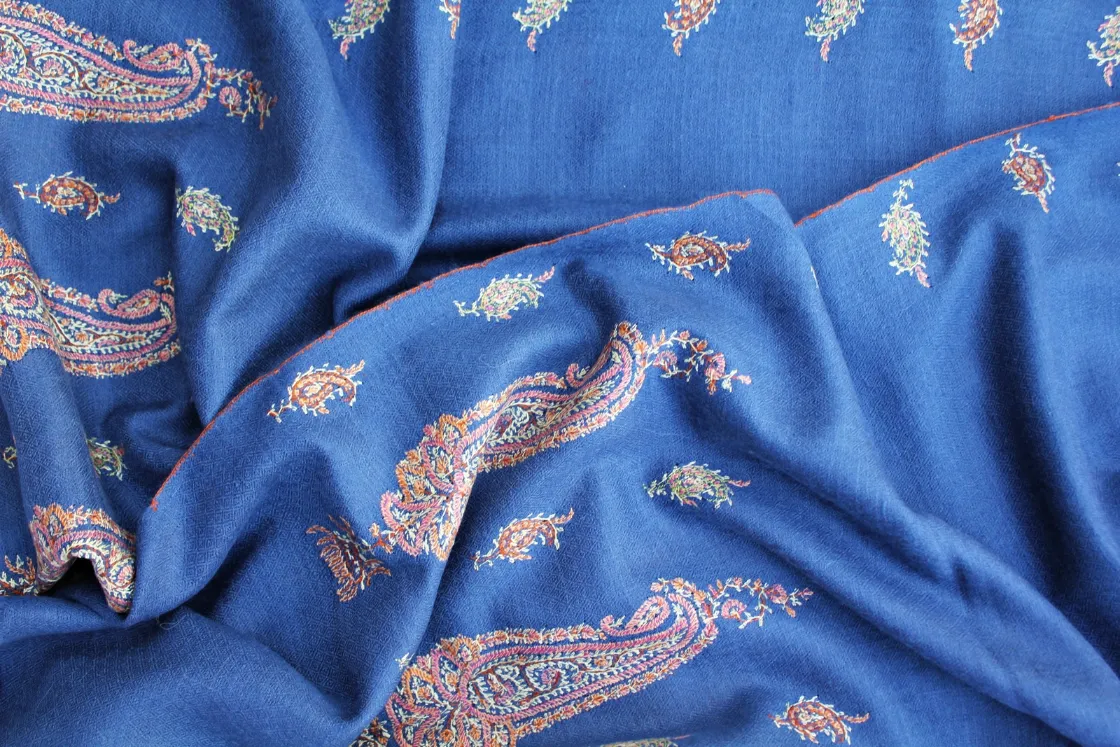
Where to find Pashmina in India
To experience the true luxury of Kashmiri Pashmina, a visit to the valleys of Jammu and Kashmir is essential. Srinagar, the capital city, is the heart of Pashmina craftsmanship, where you can find authentic Pashmina stoles and shawls in local markets like Lal Chowk and Polo View Market.
For a more curated selection, visit renowned boutiques such as the Kashmir Government Arts Emporium, where you can be assured of the authenticity and quality of the Pashmina you purchase. Additionally, the villages surrounding Srinagar, such as Ganderbal and Pulwama, are where many of the artisans live and work. To make your journey more comfortable, consider booking a reliable cab from Srinagar to these artisanal hubs, allowing you to explore the rich tradition of Pashmina weaving at your own pace. Visiting these areas provides an opportunity to see the meticulous weaving process firsthand and purchase directly from the weavers themselves.
For those unable to travel to Kashmir, major cities like Delhi and Mumbai also have specialty stores that stock authentic Kashmiri Pashmina. In Delhi, markets like Connaught Place and Dilli Haat are known for their high-quality Pashmina products.
8. Odisha Pattachitra Painting – A masterpiece from the Heritage Village of Raghurajpur
Prime Minister Narendra Modi presented Danish Prime Minister Mette Frederiksen with a traditional Pattachitra painting from Odisha, a gesture that celebrates one of India’s oldest and most revered art forms. Pattachitra, renowned for its intricate details and mythological narratives, has been a cherished craft in Odisha for millennia, with its origins dating back to as early as 5th century BC.
The heart of this artistic tradition lies in Raghurajpur, a heritage crafts village in the Puri district of Odisha. Known for its master Pattachitra painters, Raghurajpur is a living testament to the enduring legacy of this ancient art. For thousands of years, the villagers have meticulously preserved this craft, passing it down through generations, ensuring that the rich cultural heritage of Pattachitra continues to thrive.
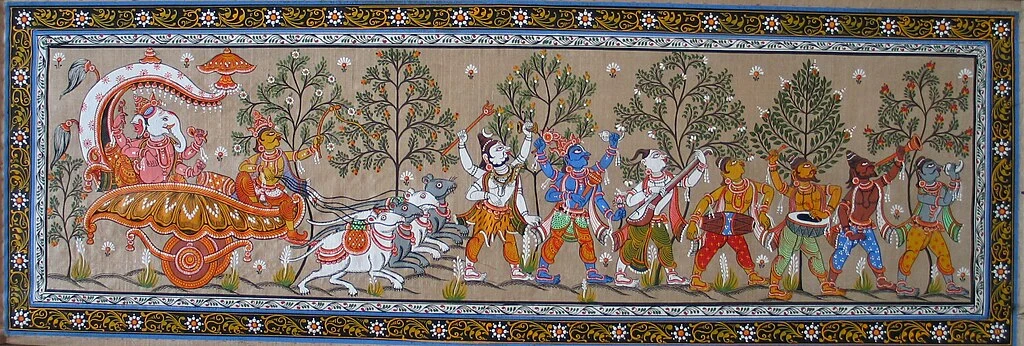
Where to find Pattachitra Art in India
To experience the rich tradition of Pattachitra art, a visit to Raghurajpur, a heritage crafts village in the Puri district of Odisha, is a must. Raghurajpur is where generations of master artisans have preserved and passed down this ancient craft.
Visitors can witness the creation of Pattachitra paintings firsthand, interact with the artisans, and purchase these exquisite pieces directly from the source. The entire village serves as both a residence and a studio, allowing you to see the process from start to finish, and perhaps even take home a piece of this timeless art.
Pattachitra art can also be found in markets and art emporiums across Odisha, including in the capital city of Bhubaneswar and the coastal town of Puri. To make your journey more comfortable, book a Savaari from Bhubaneswar or Puri to Raghurajpur, giving you the chance to explore this vibrant village and its artistic treasures at your own pace.
9. Pithora Painting – A cultural bridge between India and Australia
Prime Minister Narendra Modi gifted a Pithora painting to Australian Prime Minister Anthony Albanese, a thoughtful gesture that highlights the deep cultural connections between India and Australia. Pithora, a vibrant and ritualistic tribal folk art, is created by the Rathwa artisans of Gujarat’s Chhota Udaipur and bears a striking resemblance to the Aboriginal dot paintings from Australia’s indigenous communities.
This unique art form has its roots in the traditions of the Rathwa, Bhils, and Bhilala tribes, and is believed to have evolved from the ancient cave paintings of the Bhilala tribe. Historically, Pithora paintings served a purpose beyond decoration; they were used as a form of cartography by the tribes in Bharuch, where abstract symbols and patterns represented the natural elements around them. This tradition dates back to the 11th century, a time when Bharuch was a thriving center for traders from the North.
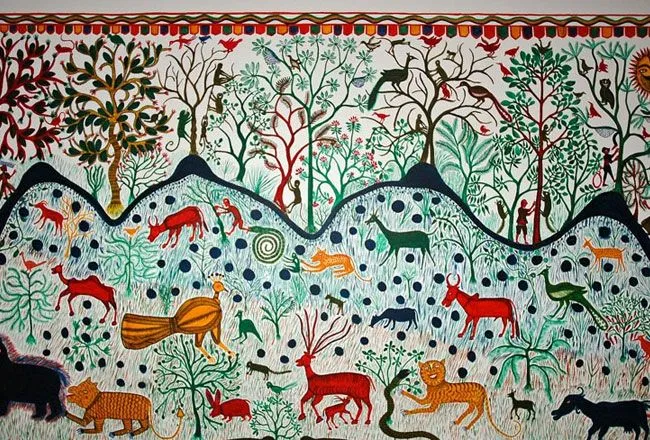
Where to find Pithora Paintings in India
To discover the rich tradition of Pithora paintings, a visit to Gujarat’s Chhota Udaipur district is essential. This region is the heartland of the Rathwa, Bhils, and Bhilala tribes, where the art form has been nurtured and preserved over centuries. Visiting these villages offers a unique opportunity to witness the creation of Pithora paintings in their traditional setting and to interact with the artists who continue to practice this age-old craft.
You can also find Pithora paintings in select art galleries and cultural emporiums in major cities like Ahmedabad and Vadodara, where the art is sold. However, the experience of visiting the tribal regions where these paintings originate provides a deeper connection to the art and the people who create it.
To make your journey seamless, consider booking a Savaari from Vadodara or Ahmedabad to Chhota Udaipur, allowing you to explore the region’s vibrant tribal culture and the timeless art of Pithora painting at your own pace.
10. Mata Ni Pachedi – A sacred textile from Gujarat’s nomadic traditions
Prime Minister Narendra Modi presented UK Prime Minister Rishi Sunak with a Mata Ni Pachedi, a sacred handmade textile from Gujarat that holds deep cultural and religious significance. The name “Mata Ni Pachedi” derives from Gujarati, where “Mata” means “Mother Goddess,” “Ni” signifies “belonging to,” and “Pachedi” refers to a “backdrop.” This textile is traditionally used as an offering in temple shrines dedicated to the Mother Goddess.
The origins of Mata Ni Pachedi trace back to the nomadic Vaghari community of Gujarat. When they were barred from entering established temples, they creatively made their own portable shrines by depicting the Mother Goddess on cloth. This innovative solution led to the creation of Mata Ni Pachedi.
The Vaghari artisans, who traditionally lived along the banks of the Sabarmati River in Ahmedabad, crafted these sacred textiles in their modest homes, washing them in the local river waters. This craft, born out of necessity and devotion, is a powerful symbol of the resilience and resourcefulness of the Vaghari community.
11. Kangra Miniature Painting – A timeless expression of love and beauty
Prime Minister Narendra Modi presented former US President Joe Biden with a Kangra miniature painting, an exquisite piece of art that captures the elegance and romanticism of ancient India. Hailing from Himachal Pradesh, these paintings are renowned for their depiction of ‘Shringar Rasa’—the essence of love and beauty—set against the serene backdrop of nature. Crafted with natural colors by skilled artisans, Kangra miniatures continue a tradition that has been cherished for centuries.
Kangra paintings are a significant part of the broader Pahari school of art, which flourished under the patronage of Rajput rulers between the 17th and 19th centuries. These artworks, created in the hilly regions of the sub-Himalayan state, reached their artistic peak during the reign of Maharaja Sansar Chand, establishing Kangra as the foremost center of Pahari painting. Celebrated for their aesthetic appeal, these paintings are also revered as religious imagery, often found adorning homes and temples.
The origins of the Kangra art style can be traced back to Guler, a small princely state in the Lower Himalayas. In the early 18th century, a family of Kashmiri painters, trained in the Mughal style, sought refuge at the court of Raja Dalip Singh of Guler. The fusion of Mughal techniques with the local artistry gave rise to what is known as the Early phase of Kangra Kalam. Unlike their predecessors who focused on royal portraits and courtly scenes, these artists embraced themes of eternal love, particularly the divine romance between Radha and Krishna.
Where to find Kangra Miniature paintings in India
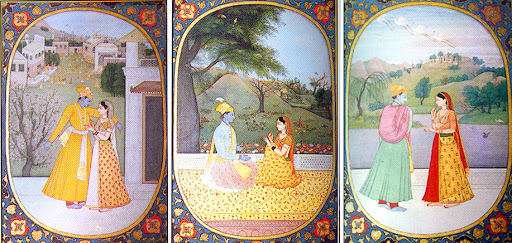
The town of Kangra, along with nearby regions such as Dharamshala and Palampur, is where this exquisite art form originated and continues to thrive. One of the best places to explore Kangra art is at the Kangra Art Museum in Dharamshala, which houses a significant collection of Kangra miniatures and provides insights into the history and techniques of this unique art form.
Additionally, various local art studios and galleries in and around Kangra offer opportunities to purchase original Kangra miniatures, allowing you to bring home a piece of this rich cultural heritage. For those who prefer a more immersive experience, visiting the villages around Guler, where the art style originally developed, provides a deeper connection to the roots of Kangra painting. Here, you can interact with local artists, watch them at work, and learn about the intricate process involved in creating these masterpieces.
If you’re traveling from outside the region, consider booking a Savaari from Chandigarh or Amritsar to the Kangra Valley, enabling you to explore the scenic beauty of the region while delving into the artistic legacy of Kangra miniature painting.
12. Kanal Brass Set – A ceremonial instrument turned decorative masterpiece
Prime Minister Narendra Modi presented Spanish Prime Minister Pedro Sanchez with a ‘Kanal Brass Set’ from the scenic districts of Mandi and Kullu in Himachal Pradesh. The Kanal is a large, straight brass trumpet, traditionally played in parts of Himalayan India, especially during ceremonial occasions like the processions of village deities. With its prominent bell shaped like a datura flower, the Kanal is not only a musical instrument but also a symbol of cultural significance.
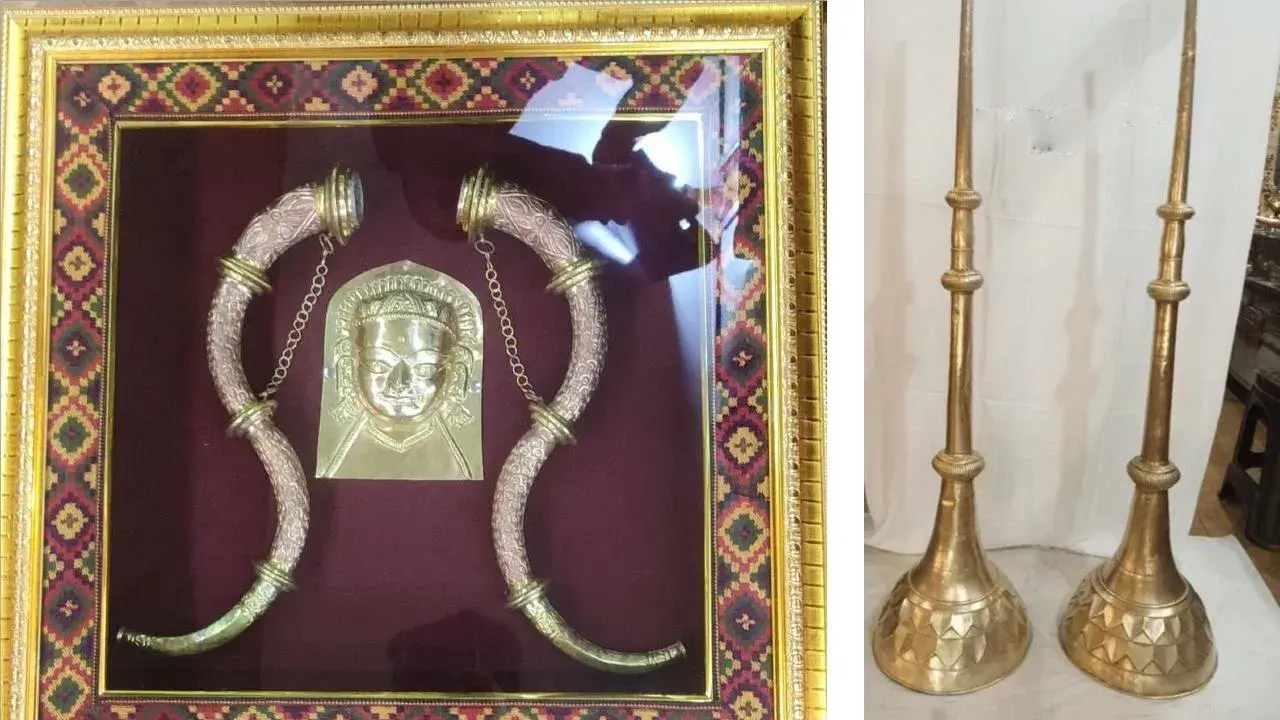
In recent times, these traditional instruments have found a new role as exquisite décor items, admired for their intricate craftsmanship and cultural heritage. Crafted by skilled metal artisans in Mandi and Kullu, the Kanal Brass Set embodies the fusion of art and tradition, making it a unique and meaningful PM Modi gift.
Where to find the Kanal Brass Set in India
To discover the traditional Kanal Brass Set, a visit to the districts of Mandi and Kullu in Himachal Pradesh is ideal. These regions are famous for their skilled metal artisans who have been crafting these ceremonial instruments for generations. In Mandi, you can explore local markets and workshops where artisans create these exquisite brass trumpets, maintaining the cultural heritage of the region.
For a more curated shopping experience, you can also visit government-run emporiums like Bhuttico in Kullu, which showcase a wide range of traditional Himachali crafts, including the Kanal Brass Set. These emporiums ensure the authenticity and quality of the products, offering a reliable source for purchasing these unique items.
13. Kanjivaram Silk Sari – A symbol of Indian elegance
Prime Minister Narendra Modi also gifted a Kanjivaram stole to Yuko Kishida, the spouse of Japanese Prime Minister Fumio Kishida, beautifully presented in a Kadam wood Jali box. Known for their luxurious texture and intricate designs, Kanjivaram silk saris are a hallmark of Indian craftsmanship and a symbol of timeless elegance.
The origins of the Kanjeevaram silk sari can be traced back to Hindu mythology. According to legend, the Kanchi Silk Weaver is a descendant of Sage Marcanda, known as the Gods’ Master Weaver. The world-famous Kanchipuram Saree weave dates back 400 years and is located in the little town of Kanchipuram. The local weavers in Kanchipuram are highly professional, producing saris that are famous for their durability, vibrant colors, and intricate patterns, often featuring motifs of temples, peacocks, and mythical creatures.
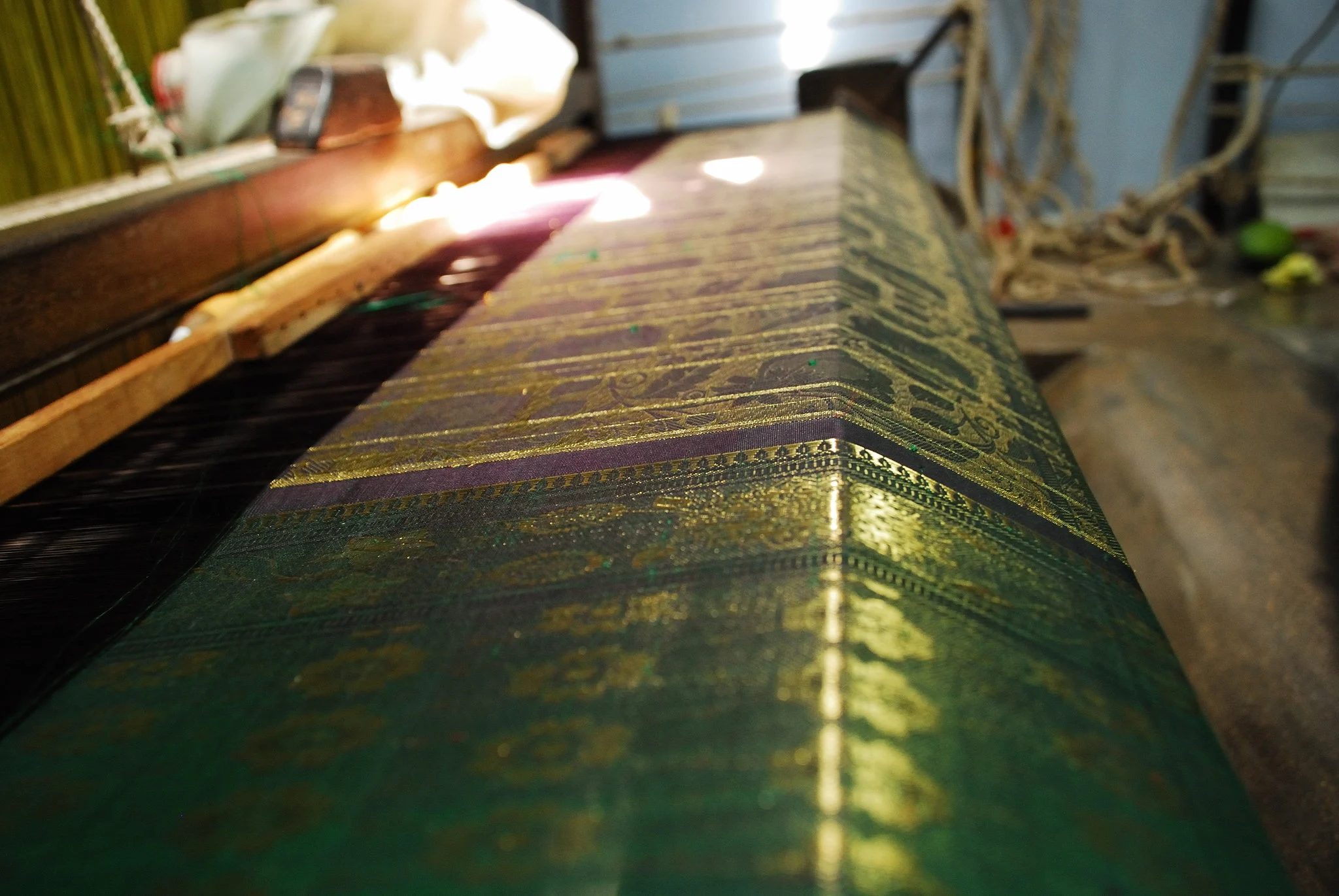
Where to find Kanjivaram Silk Saris in India
Kanchipuram is home to numerous weaving centers and shops where you can watch the weaving process firsthand and purchase directly from the artisans. Some of the most reputed stores in Kanchipuram include Sri Kumaran Stores, Nalli Silks, and Pothys, where you can explore a wide range of designs and qualities.
For those unable to visit Kanchipuram, major cities like Chennai and Bengaluru also have specialty stores that stock genuine Kanjivaram saris. In Chennai, T. Nagar is a popular shopping district with several well-known silk stores like Nalli, RMKV, and The Chennai Silks offering a vast selection of Kanjivaram saris.
To make your journey seamless, consider booking a Savaari from Chennai to Kanchipuram, allowing you to immerse yourself in the rich tradition of Kanjivaram silk weaving and bring home a piece of India’s cultural heritage.
14. Muga Silk Stole – Assam’s golden fabric of royalty
Prime Minister Narendra Modi presented a Muga silk stole in a Kadam wood box to Iriana Joko Widodo, the spouse of Indonesian President Joko Widodo. Muga silk, famous for its extraordinary durability and natural yellowish-golden sheen, is a unique variety of wild silk that is geographically tagged to the state of Assam in India. Historically, this luxurious silk was reserved for royalty. The larvae of the Assam silkmoth, which produce Muga silk, feed on the aromatic leaves of the Som (Machilus bombycina) and Sualu (Litsea polyantha) plants in the Brahmaputra Valley. Remarkably, Muga silk becomes even more lustrous with each wash, making it a prized material for traditional Assamese garments like saris, mekhalas, and chadors.
Where to find Muga Silk in India
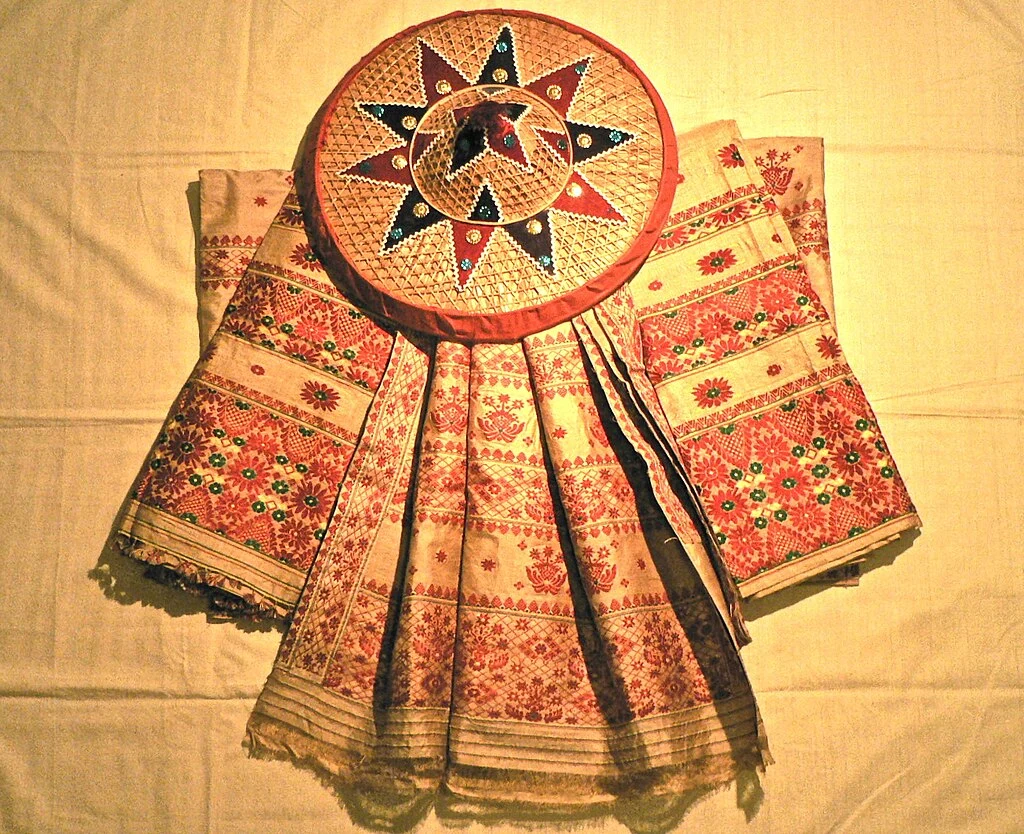
Assam is the ultimate destination for exploring the world of Muga silk. The city of Sualkuchi, often referred to as the “Silk Village of Assam,” is famous for its Muga silk production. Here, visitors can witness the intricate process of silk weaving and purchase authentic Muga silk garments directly from the weavers. Sualkuchi is located near Guwahati, making it accessible for those interested in exploring Assam’s rich silk heritage. Those who want to experience the cultural richness of Assam firsthand should consider booking a Savaari from Guwahati to Sualkuchi.
In Guwahati, Assam’s largest city, several markets and emporiums specialize in Muga silk. The Assam Government Emporium, Silkalay, and Sualkuchi Tantubay are well-known places where you can find a wide range of Muga silk products, from saris to stoles and chadors. These stores ensure the authenticity and quality of the silk, offering a trusted source for purchasing this luxurious fabric.
15. Zighrana Ittar – The fragrance of Kannauj’s timeless craft
Prime Minister Narendra Modi also presented global leaders with Zighrana Ittar, a fragrant masterpiece from Kannauj, Uttar Pradesh. For centuries, Kannauj has been the epicenter of oil-based botanical perfumes, known as attar, crafted using time-honored distillation methods. These perfumes have a rich history, once sought after by Mughal royals and everyday people alike in ancient India’s fragrance-obsessed culture. Kannauj’s attar, also known as ittr, has been enchanting the senses for over 400 years, long before places like Grasse in France became synonymous with perfume. The artisanal method used in Kannauj, known as degh-bhapka in Hindi, employs copper stills fueled by wood and cow dung, a practice that has remained unchanged for centuries.
Where to find Ittar in India
To experience the essence of Kannauj’s famed ittar, a visit to the city itself is a must. The narrow lanes of Bara Bazaar, the main market in Kannauj, transport you back in time to a medieval world where the air is thick with the scent of countless attars. Long-established shops, packed with finely cut glass bottles of attar and ruh (essential oil), offer an intoxicating array of fragrances, each more alluring than the last.
Kannauj is conveniently located just a four-hour drive from Agra and less than two hours from historic Lucknow, making it an accessible destination for those eager to explore the rich tradition of Indian perfumery. For those seeking to purchase authentic ittar outside of Kannauj, cities like Lucknow and Delhi also have specialized perfumeries that stock these exquisite fragrances. In Lucknow, Hazratganj is famous for its high-quality attar shops, while in Delhi, you can explore the markets of Chandni Chowk for a wide variety of Kannauj perfumes.
To make your visit smooth and enjoyable, consider booking a Savaari from Agra or Lucknow to Kannauj, allowing you to immerse yourself in the world of traditional Indian fragrances and bring home a piece of this timeless craft.
16. Thoothukudi Pearl – A jewel of India’s coastal heritage
In a recent exchange of thoughtful gifts, Bill Gates presented Prime Minister Narendra Modi with a set of nutrition books. In return, PM Modi gifted a box symbolizing India’s ‘Vocal for Local’ initiative, filled with treasures such as a luxurious Pashmina shawl, exquisite saffron, and renowned Darjeeling and Nilgiri teas. Among these PM Modi gifts, was a stunning Thoothukudi pearl, a symbol of India’s fine craftsmanship and rich coastal heritage.
Thoothukudi, also known as Tuticorin, is the ‘Pearl City’ due to its long-standing tradition of pearl fishing along its coastal belt. This city, one of India’s major seaports, boasts a lush history that dates back to the 6th century CE.
Today, Tuticorin is famous for its picturesque coastline and thriving pearl fishery, which turned the city into an international trade hub. Although pearl fishing has diminished over time, the industry has recently seen a revival, proving once again to be a profitable venture and earning significant revenues for the government.

Where to find Thoothukudi Pearls
For those looking to purchase Thoothukudi pearls, Pearl Marine and Annai Jewellers are the go-to destinations in Tuticorin. These establishments offer a wide range of high-quality pearls, allowing you to bring home a piece of this historic city’s maritime legacy.
Beyond souvenirs – The artisanal masterpieces representing India’s heritage
Prime Minister Narendra Modi has presented numerous other gifts that beautifully reflect India’s rich traditions, such as Khadi scarves, Sheeshamwood Sandooks with Brass Patti, Araku Coffee from the Araku Valley, and Kashmir Saffron. These PM Modi gifts are not just tokens but representations of India’s vibrant cultural heritage and the passion that goes into its artisanal crafts. India is a land of countless wonders and treasures, each piece of art telling a unique story of the country’s diverse traditions and history. On the one hand, these treasures of India highlight the nation’s heritage; on the other hand, they also reflect PM Modi’s strategic diplomacy.
So, when you visit different parts of India, why settle for just buying magnets as souvenirs? Instead, consider bringing home these artistic masterpieces that truly capture the essence of the places you visit. Download the Savaari app and book a cab to these destinations, where a knowledgeable chauffeur will ensure your journey is not only safe but also enriched with insights about the local culture and crafts. Embark on this journey to discover and cherish the true artistry of India.
Last Updated on August 19, 2024 by Shabari Shankar



